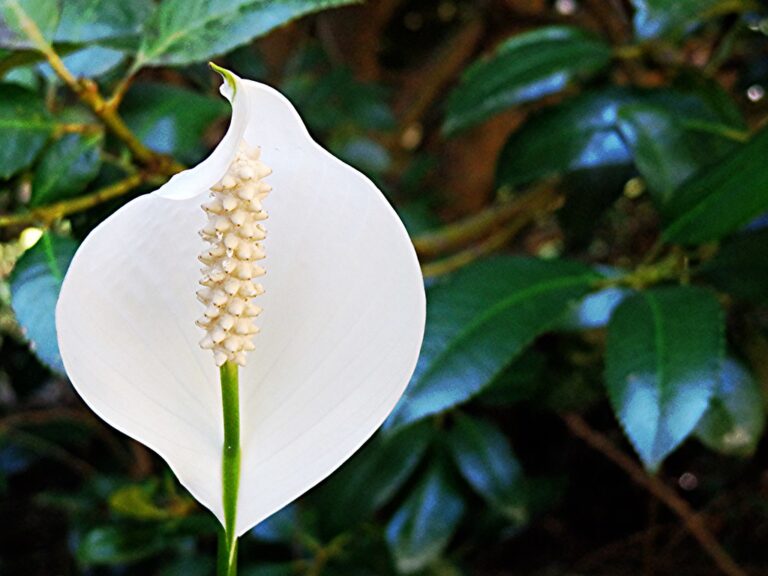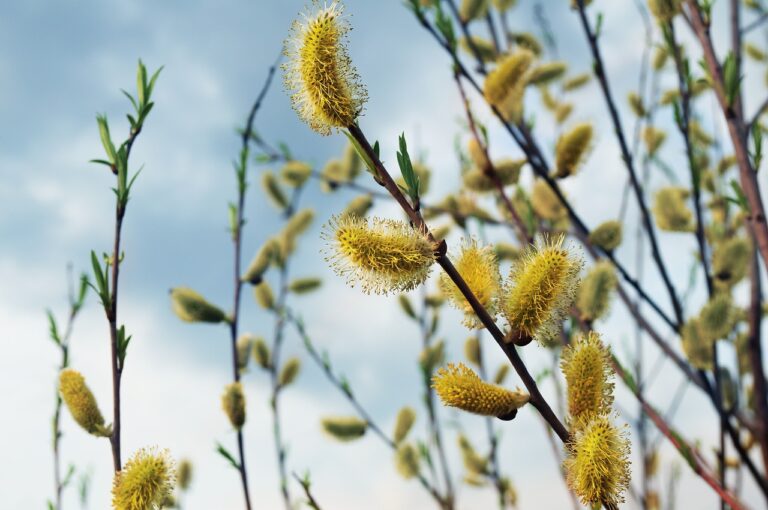Exploring the Unique Characteristics of Fruit Trees With Heart-Shaped Leaves
Discover the enchanting world of fruit trees with heart-shaped leaves. You'll be captivated by their distinctive beauty and the symbolism they hold. In this article, we will delve into the unique characteristics of these trees and explore the benefits of growing them. Get ready to uncover interesting facts, learn how to identify them, and discover the secrets to cultivating and caring for these remarkable trees. Embark on this journey of exploration and be rewarded with the sweetest fruits nature has to offer.
Different Types of Fruit Trees
If you're interested in learning about different types of fruit trees, there are a wide variety of options to explore. From the popular apple and orange trees to the lesser-known persimmon and pawpaw trees, each type offers a unique set of characteristics that make them worth considering. Imagine walking through an orchard, the air filled with the sweet scent of ripening fruit. As you stroll along, you notice the vibrant hues of the apple trees, their branches heavy with juicy red and green apples. Nearby, the orange trees stand tall, their glossy leaves glistening in the sunlight. And then, you come across the intriguing heart-shaped leaves of the persimmon and pawpaw trees, their delicate beauty captivating your attention. Each tree has its own story to tell, its own flavors to offer. Exploring these different fruit trees is like embarking on a culinary adventure, serving others with a delicious bounty straight from nature's abundance.
Symbolism of Heart-Shaped Leaves
What significance do heart-shaped leaves hold for fruit trees? The symbolism of heart-shaped leaves goes beyond their aesthetic appeal. These leaves, with their distinctive shape, serve as a reminder of the love and care that fruit trees require. Just as the heart is the center of our emotions, the heart-shaped leaves symbolize the deep connection between the tree and its caretaker. They remind us to nurture and protect these trees, ensuring their growth and bountiful harvest. The heart-shaped leaves also represent the life-giving properties of fruit trees, as they convert sunlight into energy through photosynthesis. They serve as a beautiful reminder of the tree's ability to provide nourishment and sustenance to those who enjoy their delicious fruits. So, next time you see a fruit tree with heart-shaped leaves, appreciate not only their beauty but also the symbolic meaning they hold.
Benefits of Growing Fruit Trees
When growing fruit trees with heart-shaped leaves, you can enjoy a multitude of benefits that extend beyond their symbolic significance. These trees not only add beauty to your surroundings but also provide you with delicious and nutritious fruits. Imagine stepping outside your door and plucking ripe, juicy apples or pears straight from your own tree. Not only will you have access to fresh, organic produce, but you'll also save money on grocery bills. Growing fruit trees can also be a therapeutic and rewarding experience. Tending to these trees allows you to connect with nature, reducing stress and promoting wellbeing. Additionally, fruit trees attract beneficial insects and birds, creating a balanced ecosystem in your garden. Embrace the joy of growing your own fruit and experience the numerous benefits it brings to your life.
Interesting Facts About Heart-Shaped Leaves
Growing fruit trees with heart-shaped leaves offers a variety of interesting facts that will captivate your curiosity and deepen your appreciation for these unique plants. One fascinating fact is that heart-shaped leaves are not just a symbol of love, but they also serve a purpose in nature. These leaves have a distinct shape that allows them to efficiently collect sunlight, maximizing the tree's ability to photosynthesize and produce energy. Additionally, heart-shaped leaves have a higher surface area compared to other leaf shapes, allowing for increased transpiration, which helps regulate the tree's temperature and prevent overheating. Moreover, the heart shape of these leaves often varies in size and symmetry, adding to the charm and individuality of each tree. It's truly remarkable how nature creates such intricate and functional designs, reminding us of the beauty and ingenuity found in every leaf.
Identifying Fruit Trees With Heart-Shaped Leaves
To identify fruit trees with heart-shaped leaves, you can simply observe their distinct leaf morphology. These trees possess leaves that resemble the shape of a heart, with a pointed apex and a rounded base. The edges of the leaves are usually smooth, creating a symmetrical appearance. When examining the leaves closely, you may notice prominent veins running from the base to the tip, adding to their unique beauty. The size of the leaves can vary depending on the species, ranging from small and delicate to large and robust. Some common fruit trees with heart-shaped leaves include the mulberry tree, pawpaw tree, and persimmon tree. By recognizing these distinct leaf characteristics, you can easily identify and appreciate the beauty of these fruit trees in your surroundings.
Unique Characteristics of Heart-Shaped Leaves
Heart-shaped leaves possess a distinct and captivating appearance that sets them apart from other types of foliage. These unique leaves have a symmetrical, elongated shape, with a narrowing point at the tip and a rounded base that resembles the shape of a heart. They are often smooth and glossy, adding a touch of elegance to any garden or landscape. The lush green color of these leaves is vibrant and eye-catching, creating a sense of vitality and abundance. When the sunlight filters through the heart-shaped leaves, it creates a beautiful play of light and shadow, casting intriguing patterns on the ground. The sight of these leaves swaying gently in the breeze evokes a feeling of tranquility and harmony. It is no wonder that these leaves are highly sought after and cherished by garden enthusiasts, as they bring a touch of charm and beauty to any outdoor space.
Cultivating and Caring for Fruit Trees
To successfully cultivate and care for fruit trees with heart-shaped leaves, you need to ensure proper planting techniques and provide adequate maintenance. When planting these trees, choose a sunny location with well-draining soil. Dig a hole that is twice as wide and slightly deeper than the root ball. Gently loosen the roots before placing the tree in the hole. Backfill with soil and water thoroughly to eliminate air pockets. Mulching around the base of the tree will help retain moisture and suppress weed growth. Regular watering is essential, especially during dry periods, to keep the soil consistently moist. Pruning is necessary to promote healthy growth and fruit production. Remove any damaged or diseased branches, as well as any crossing branches that may hinder airflow. Applying a balanced fertilizer in early spring and midsummer will provide the necessary nutrients for optimum growth. With proper care, these fruit trees with heart-shaped leaves will thrive and reward you with a bountiful harvest.
Fruiting Seasons of Heart-Shaped Leaf Trees
When caring for fruit trees with heart-shaped leaves, it is important to understand their fruiting seasons. Observing the cycles of these trees can be a truly rewarding experience. Picture yourself standing beneath the lush canopy of a heart-shaped leaf tree, the air filled with the sweet scent of blossoms. As spring unfolds, delicate buds begin to appear, promising the abundance of fruit to come. The warm summer sun kisses the leaves, encouraging them to stretch towards the sky. Soon, the branches are heavy with vibrant, juicy fruits, their colors ranging from deep reds to golden yellows. And as autumn arrives, the leaves turn a fiery hue, signaling the end of the fruitful season. Understanding the fruiting seasons of these trees allows you to plan accordingly, ensuring that you can share the bountiful harvest with others.
Pruning and Shaping Heart-Shaped Leaf Trees
To maintain the health and shape of your fruit trees with heart-shaped leaves, it is essential to regularly prune and shape them. Pruning not only enhances the aesthetic appeal of your trees but also promotes their overall well-being. Start by removing any dead, diseased, or damaged branches, as they can hinder the tree's growth and lead to potential infections. Shape the tree by selectively pruning branches to maintain an open and balanced structure. This allows for better air circulation and sunlight penetration, which are crucial for optimal fruit production. Additionally, thinning out crowded branches reduces competition for resources, ensuring that each fruit receives ample nutrients. Remember to prune during the dormant season to minimize stress on the tree. By skillfully pruning and shaping your heart-shaped leaf trees, you will be rewarded with healthier, more bountiful harvests.
Harvesting and Enjoying the Fruits
Once your heart-shaped leaf fruit trees have reached the appropriate stage of maturity, you can begin harvesting and savoring the delicious fruits they bear. The anticipation of this moment is palpable as you carefully pluck the ripe fruits from the branches. The vibrant colors of the fruits, ranging from deep reds to vibrant yellows, entice your senses. Their sweet aroma fills the air, causing your mouth to water in anticipation. You gently hold each fruit in your hands, feeling their smooth skin and assessing their firmness. With a gentle twist, the fruits effortlessly detach from the tree, a testament to their readiness for consumption. As you bite into the succulent flesh, the explosion of flavors delights your taste buds. The fruits are a true gift, nature's way of nourishing and indulging us.
Conclusion
As you explore the unique characteristics of fruit trees with heart-shaped leaves, you can't help but be captivated by their beauty and symbolism. These trees not only provide a bountiful harvest of delicious fruits but also add a touch of romance to any landscape. From identifying and cultivating these trees to enjoying the fruits they bear, the journey of growing heart-shaped leaf trees is a rewarding one. So, immerse yourself in this enchanting world and let these trees fill your life with love and abundance.






